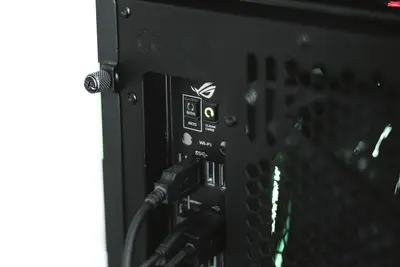User and group management is a fundamental aspect of Linux system administration. In AlmaLinux, proper user management ensures system security, resource allocation, and organized access control. This comprehensive guide will walk you through everything you need to know about managing users and groups in AlmaLinux.
Table of Contents
- Understanding Users and Groups
- Creating and Managing Users
- Working with Groups
- User Account Properties
- Password Management
- File Permissions and Ownership
- Special User Accounts
- User Environment Configuration
- Security Best Practices
- Troubleshooting Common Issues
Understanding Users and Groups
In AlmaLinux, every process and file is owned by a user. Users are identified by a unique User ID (UID), while groups are identified by a Group ID (GID). This identification system forms the foundation of Linux security and access control.
Key Concepts
- User Account: Represents an individual who can log into the system
- System Account: Used by services and daemons (typically UID < 1000)
- Group: A collection of users with shared permissions
- Primary Group: The main group assigned to a user
- Secondary Groups: Additional groups a user belongs to
Important Files
/etc/passwd: Contains user account information/etc/shadow: Stores encrypted passwords/etc/group: Contains group information/etc/gshadow: Stores encrypted group passwords
Creating and Managing Users
Creating a New User
The primary command for creating users in AlmaLinux is useradd:
# Basic user creation
sudo useradd john
# Create user with specific home directory
sudo useradd -d /home/john john
# Create user with comment (full name)
sudo useradd -c "John Doe" john
# Create user with specific shell
sudo useradd -s /bin/bash john
# Create user with specific UID
sudo useradd -u 1500 john
# Create user and set password in one command
sudo useradd -m -p $(openssl passwd -1 'password123') johnComplete User Creation Example
Here’s a comprehensive example of creating a user with all common options:
sudo useradd -m -d /home/johndoe -c "John Doe" -s /bin/bash -G wheel,developers johndoe
sudo passwd johndoeThis command:
-m: Creates home directory-d: Specifies home directory path-c: Adds a comment (full name)-s: Sets the login shell-G: Adds user to supplementary groups
Modifying User Accounts
Use the usermod command to modify existing user accounts:
# Change user's login name
sudo usermod -l newname oldname
# Change user's home directory
sudo usermod -d /new/home/dir -m username
# Add user to additional groups
sudo usermod -aG groupname username
# Change user's shell
sudo usermod -s /bin/zsh username
# Lock user account
sudo usermod -L username
# Unlock user account
sudo usermod -U username
# Set account expiration date
sudo usermod -e 2025-12-31 usernameDeleting Users
Remove users with the userdel command:
# Delete user (keeps home directory)
sudo userdel username
# Delete user and home directory
sudo userdel -r username
# Force deletion (even if user is logged in)
sudo userdel -f usernameWorking with Groups
Creating Groups
# Create a new group
sudo groupadd developers
# Create group with specific GID
sudo groupadd -g 1500 developers
# Create system group
sudo groupadd -r systemgroupManaging Group Membership
# Add user to group
sudo usermod -aG groupname username
# Remove user from group (edit /etc/group manually or use gpasswd)
sudo gpasswd -d username groupname
# Set group administrators
sudo gpasswd -A username groupname
# View user's groups
groups username
# View all groups
cat /etc/groupModifying and Deleting Groups
# Rename group
sudo groupmod -n newname oldname
# Change group GID
sudo groupmod -g 1501 groupname
# Delete group
sudo groupdel groupnameUser Account Properties
Viewing User Information
# Display user account information
id username
# Show all users
cat /etc/passwd
# Show logged-in users
who
w
# Show user's last login
last username
# Display user account status
sudo passwd -S usernameAccount Aging and Expiration
# Set password expiration
sudo chage -M 90 username # Password expires after 90 days
# Set account expiration
sudo chage -E 2025-12-31 username
# View password aging information
sudo chage -l username
# Force password change on next login
sudo chage -d 0 usernamePassword Management
Setting and Changing Passwords
# Set/change user password (as root)
sudo passwd username
# Change your own password
passwd
# Set password in batch mode
echo "username:newpassword" | sudo chpasswd
# Generate secure password
openssl rand -base64 12Password Policies
Configure password policies in /etc/security/pwquality.conf:
# Edit password quality requirements
sudo nano /etc/security/pwquality.conf
# Example settings:
minlen = 12 # Minimum password length
dcredit = -1 # At least one digit
ucredit = -1 # At least one uppercase
lcredit = -1 # At least one lowercase
ocredit = -1 # At least one special characterManaging /etc/login.defs
This file contains system-wide password and account settings:
# Important settings in /etc/login.defs
PASS_MAX_DAYS 90 # Maximum password age
PASS_MIN_DAYS 7 # Minimum password age
PASS_MIN_LEN 8 # Minimum password length
PASS_WARN_AGE 7 # Password expiration warning
UID_MIN 1000 # Minimum UID for regular users
GID_MIN 1000 # Minimum GID for regular groupsFile Permissions and Ownership
Understanding Permissions
Linux uses a three-tier permission system:
- Owner (u): The user who owns the file
- Group (g): The group that owns the file
- Others (o): Everyone else
Each tier has three permissions:
- Read (r): Value 4
- Write (w): Value 2
- Execute (x): Value 1
Changing Ownership
# Change file owner
sudo chown username filename
# Change file group
sudo chgrp groupname filename
# Change both owner and group
sudo chown username:groupname filename
# Recursive ownership change
sudo chown -R username:groupname directory/Managing Permissions
# Symbolic method
chmod u+x filename # Add execute for owner
chmod g-w filename # Remove write for group
chmod o=r filename # Set read-only for others
chmod a+r filename # Add read for all
# Numeric method
chmod 755 filename # rwxr-xr-x
chmod 644 filename # rw-r--r--
chmod 600 filename # rw-------
# Special permissions
chmod u+s filename # Set SUID
chmod g+s directory # Set SGID
chmod +t directory # Set sticky bitSpecial User Accounts
The root User
The root user (UID 0) has unlimited privileges. Best practices:
# Switch to root user
sudo su -
# Run single command as root
sudo command
# Edit sudoers file safely
sudo visudoSystem Accounts
System accounts are used by services and typically have:
- UID < 1000
- No login shell (/sbin/nologin)
- No home directory or a system directory
# Create system account
sudo useradd -r -s /sbin/nologin -d /nonexistent servicenameThe nobody User
Used for unprivileged operations:
# View nobody user info
id nobody
getent passwd nobodyUser Environment Configuration
Shell Configuration Files
User environment is configured through several files:
System-wide configuration:
/etc/profile: System-wide profile/etc/bashrc: System-wide bash configuration/etc/profile.d/: Directory for additional configurations
User-specific configuration:
~/.bash_profile: User’s profile (login shells)~/.bashrc: User’s bash configuration (non-login shells)~/.bash_logout: Executed on logout
Setting Environment Variables
# In ~/.bashrc or ~/.bash_profile
export PATH=$PATH:/custom/path
export EDITOR=vim
export HISTSIZE=10000
# Set system-wide in /etc/environment
JAVA_HOME=/usr/lib/jvm/java-11Default Files for New Users
Files in /etc/skel/ are copied to new user home directories:
# List skeleton directory
ls -la /etc/skel/
# Add custom file for all new users
sudo cp /path/to/customfile /etc/skel/Security Best Practices
1. Strong Password Policies
# Enforce password complexity
sudo authconfig --passminlen=12 --enablereqlower --enablerequpper --enablereqdigit --enablereqother --update2. Limit User Access
# Restrict user to specific commands with sudo
# In /etc/sudoers or /etc/sudoers.d/username
username ALL=(ALL) /usr/bin/systemctl restart httpd3. Account Security
# Disable unused accounts
sudo usermod -L unused_account
# Set account expiration for temporary users
sudo useradd -e 2025-12-31 tempuser
# Remove shell access for service accounts
sudo usermod -s /sbin/nologin serviceaccount4. Monitor User Activity
# Check last login times
lastlog
# Monitor failed login attempts
sudo grep "Failed password" /var/log/secure
# Track user commands (if audit is enabled)
sudo aureport -x --summary5. Implement Access Control Lists (ACLs)
# Set ACL for specific user
setfacl -m u:username:rx /path/to/file
# Set default ACL for directory
setfacl -d -m g:groupname:rwx /path/to/directory
# View ACLs
getfacl /path/to/fileTroubleshooting Common Issues
User Cannot Log In
- Check account status:
sudo passwd -S username- Verify password expiration:
sudo chage -l username- Check for account lock:
sudo grep username /etc/shadow
# Look for ! or !! at the beginning of password field- Verify shell access:
grep username /etc/passwd
# Ensure valid shell is setPermission Denied Errors
- Check file ownership:
ls -l filename- Verify group membership:
groups username- Check effective permissions:
namei -l /path/to/fileHome Directory Issues
- Verify home directory exists:
ls -ld /home/username- Check ownership:
sudo chown -R username:username /home/username- Fix permissions:
sudo chmod 755 /home/usernameSudo Access Problems
- Check sudo configuration:
sudo -l -U username- Verify sudoers syntax:
sudo visudo -c- Check group membership:
# Ensure user is in wheel group for sudo access
sudo usermod -aG wheel usernameAdvanced User Management
Bulk User Operations
Create multiple users from a file:
#!/bin/bash
# bulk_create_users.sh
while IFS=: read -r username password fullname
do
sudo useradd -m -c "$fullname" "$username"
echo "$username:$password" | sudo chpasswd
echo "Created user: $username"
done < users.txtUser Quotas
Implement disk quotas:
# Enable quotas on filesystem (edit /etc/fstab)
# Add usrquota,grpquota to mount options
# Create quota database
sudo quotacheck -cugm /home
# Enable quotas
sudo quotaon -v /home
# Set user quota
sudo setquota -u username 1G 1.5G 0 0 /homeCentralized Authentication
For enterprise environments, consider:
- LDAP integration
- Active Directory integration
- FreeIPA
- SSSD (System Security Services Daemon)
Conclusion
Effective user and group management is crucial for maintaining a secure and well-organized AlmaLinux system. By following the practices outlined in this guide, you can ensure proper access control, maintain security, and efficiently manage user accounts.
Key takeaways:
- Always use strong passwords and enforce password policies
- Regularly audit user accounts and remove unused ones
- Implement proper file permissions and ownership
- Use groups effectively for access control
- Monitor user activity and login attempts
- Keep system accounts secure and restricted
Remember that user management is an ongoing process. Regularly review and update your user management practices to maintain system security and efficiency.
Additional Resources
- AlmaLinux Documentation
- Red Hat Enterprise Linux 9 Security Guide
- Linux User Administration Guide
manpages: useradd, usermod, passwd, chage, groupadd




